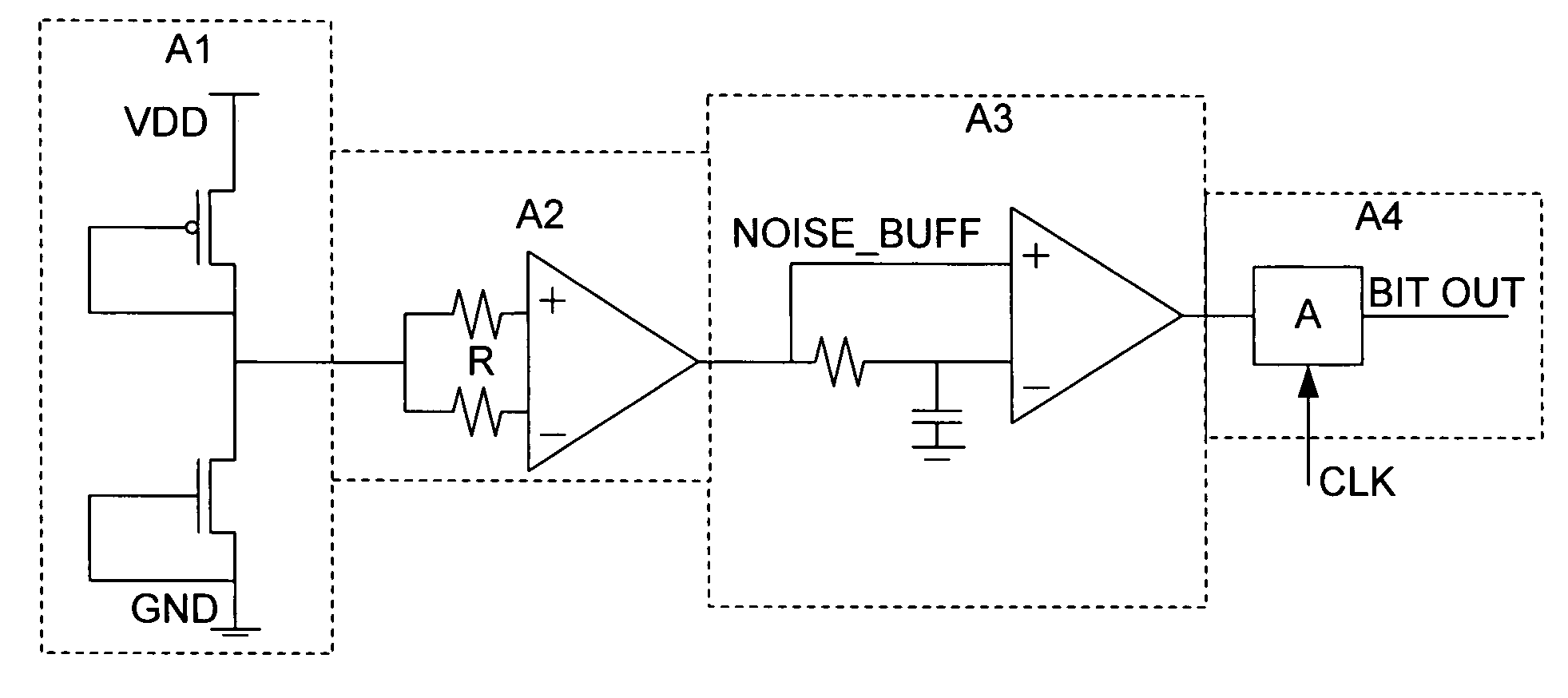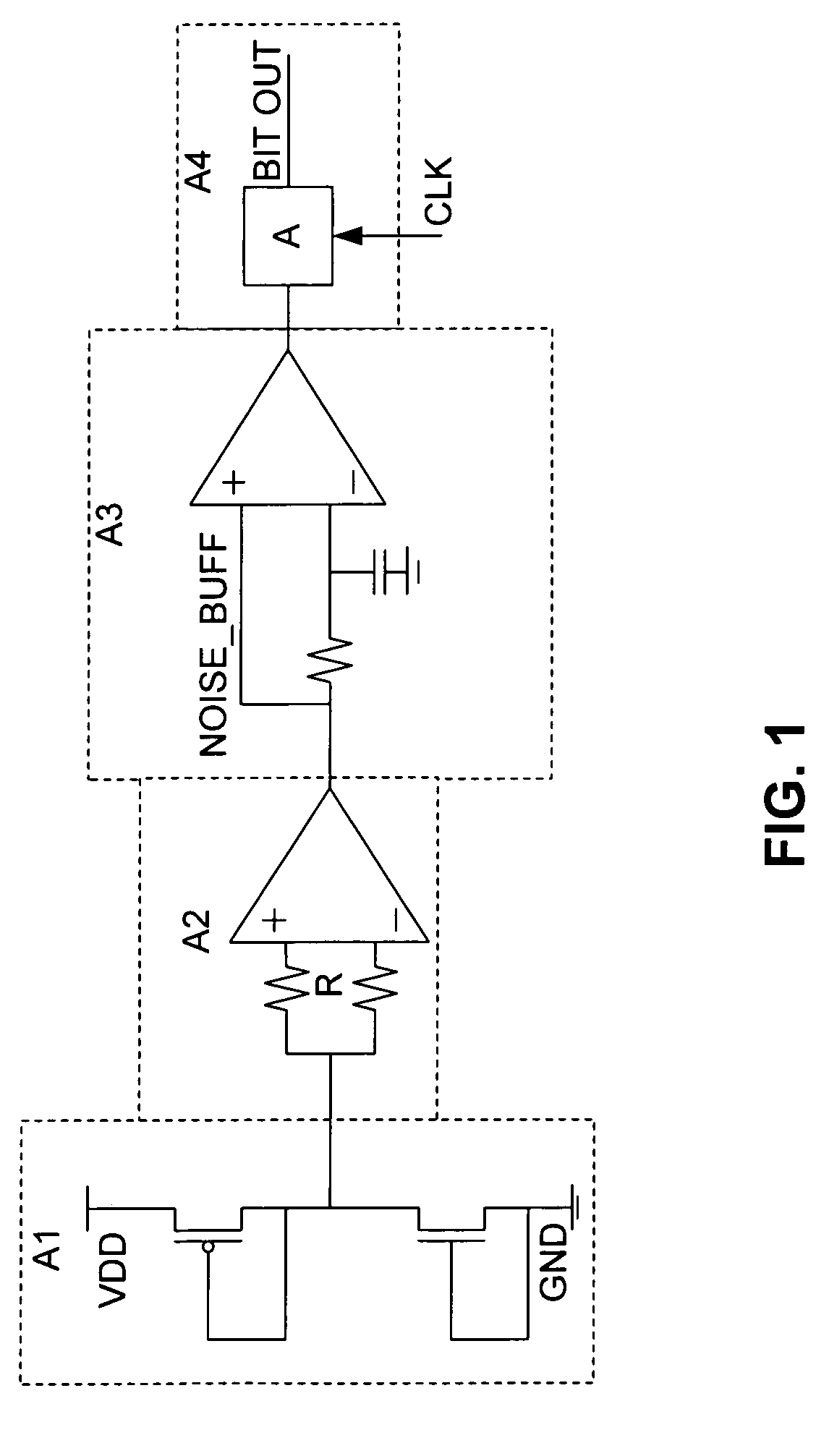Random bit sequence generator
a generator and random bit technology, applied in the field of random number generators, can solve the problems of relatively complex circuit architecture and unsuitable pseudo-rngs for applications
- Summary
- Abstract
- Description
- Claims
- Application Information
AI Technical Summary
Benefits of technology
Problems solved by technology
Method used
Image
Examples
Embodiment Construction
[0022]An RNG according to an embodiment of the invention is depicted in FIG. 1. It comprises a biasing circuit A1 that provides a certain bias voltage to a source A2 of a noisy voltage signal NOISE_BUFF, by an amplification stage A3 of the AC component of the signal NOISE_BUFF and an output stage A4 that generates the random bit sequence.
[0023]The biasing line A1 may be realized in various modes. For example, biasing may be accomplished by connecting, in series, two or more diode-connected MOSFET transistors between the supply nodes, as depicted in FIG. 1, or by using a common resistive voltage divider. In the sample embodiment of FIG. 1, two diode-connected MOSFETs of opposite conductivity are used, such that the P-channel MOSFET is always in a conduction or turned on state while the N-channel MOSFET is always in a turned off state, because in this way the noise source A2 may be satisfactorily biased while limiting power consumption.
[0024]For sake of simplicity, the noise source A2...
PUM
 Login to View More
Login to View More Abstract
Description
Claims
Application Information
 Login to View More
Login to View More - R&D
- Intellectual Property
- Life Sciences
- Materials
- Tech Scout
- Unparalleled Data Quality
- Higher Quality Content
- 60% Fewer Hallucinations
Browse by: Latest US Patents, China's latest patents, Technical Efficacy Thesaurus, Application Domain, Technology Topic, Popular Technical Reports.
© 2025 PatSnap. All rights reserved.Legal|Privacy policy|Modern Slavery Act Transparency Statement|Sitemap|About US| Contact US: help@patsnap.com



